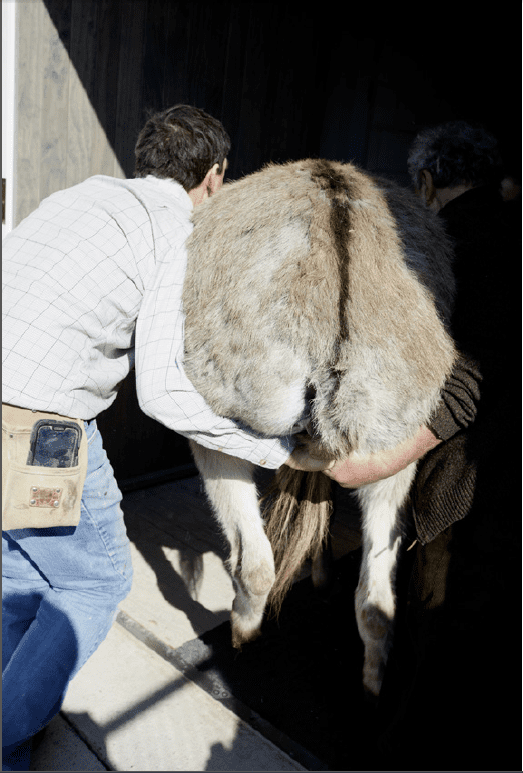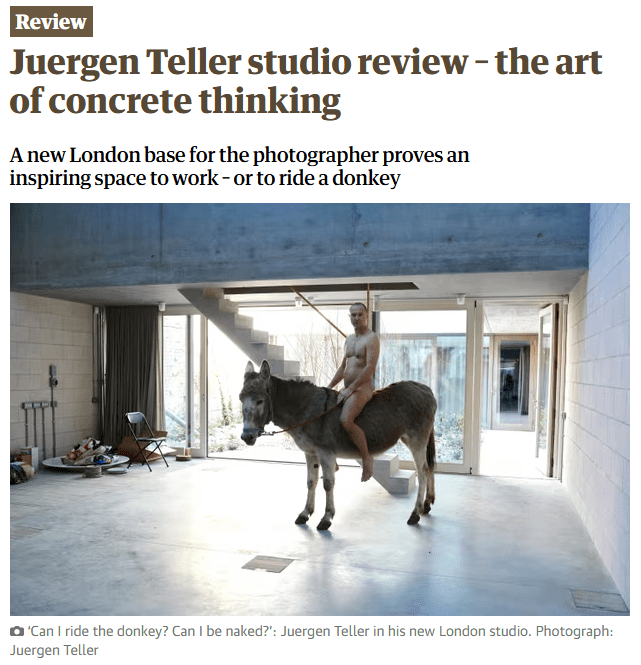London Timber Windows with Low Sight Lines for Maximum Light
Key takeaways:
- Gowercroft designed and installed 45 bespoke timber windows and doors at Juergen Teller’s West London studio
- The studio won three RIBA awards and was shortlisted for the 2017 Stirling Prize
- The project has been featured in The Guardian, Architects’ Journal, Architectural Review, Glass Times and more
- Joinery used Accoya® timber with ultra-slim profiles and specialist finishes to complement the concrete interior
What makes this such a prestigious project?
Juergen Teller is one of the most influential fashion and fine art photographers of his generation. His clients include Kate Moss, Victoria Beckham, Vivienne Westwood and Kanye West. He is known for his honest, unpolished portraits and iconic visual style.
In 2016, he commissioned 6a Architects to design a photography studio on a narrow site in Latimer Road, West London. It needed to offer space to work, store his archive, and most importantly, capture the perfect natural light.
The result is not just a studio. It is a prestigious cultural landmark and one of the most celebrated buildings of the decade.
What was Gowercroft’s role in the project?
Gowercroft was selected to design, manufacture and install a complete package of bespoke timber joinery for the project. This included:
- 4 lift and slide doors
- 9 casement windows
- 2 sets of French doors
- 3 single doors
- 25 internal and cupboard doors
- 2 multi-storey glazed stairwell screens
- Matching soffits, shutters and internal linings
We worked closely with 6a Architects to develop new section profiles, match the building’s clean aesthetic and solve technical installation challenges. Many items were re-engineered for tight access and fine tolerances.
Our contribution was also shortlisted for the 2016 BWF Technical Award, recognising the craftsmanship and innovation involved.
Read our architect-focused design case study
How did our windows support photography inside the studio?
The space was built to prioritise light. Teller needed soft, even natural daylight throughout the building, with no glare and no unnecessary shadows.
We used Guardian triple glazing, which delivered clarity, energy performance and the correct light colour for photography.
Our joinery featured:
- Ultra-slim sightlines for maximum light
- Flush detailing with plant-on bead mouldings for elegant shadow lines
- Semi-transparent coatings (grey outside, white inside) that enhanced the Accoya grain and complemented the concrete walls
Everything was designed to work quietly in the background while supporting high-level creative work.
How did Gowercroft handle the installation challenges?
The site was just 8 metres wide, with no rear access and only a standard front door. No cranes. No large equipment. Everything had to be carried by hand, including large glazed units and screens.
To solve this, we designed several large items to be delivered in sections and assembled on site. This included a two-storey casement window, built from three vertical pieces with precise alignment. Our team ensured a seamless finish and airtight result.
Did Gowercroft really help with a donkey?
We did! During a photoshoot, Juergen Teller wanted to photograph himself on a donkey inside the studio (see the Guardian screenshot further down).
Our Special Projects Director, David Brown, who happens to have a farming background, stepped in to help. The donkey made it into the studio safely, and the shoot went ahead as planned.
It’s a fun example of the personal, hands-on service that makes our team stand out.
We don’t just design beautiful products. We help get the job done… whatever that looks like!

What awards did the studio win?
The studio won some of the most prestigious awards in British architecture:
- RIBA London Award
- RIBA London Building of the Year
- RIBA National Award
- Shortlisted for the 2017 Stirling Prize
Read more about the Stirling Prize shortlisting
Where has the studio been featured in the press?

This project has been covered across architectural, design and trade media, including:
- The Guardian
- Architectural Review
- Architects’ Journal Buildings Library
- BBC Arts
- Glass Times
- Fenestration News
- ABC&D Magazine
- Connect East Midlands
- ADF (Architects Datafile)
Looking for award-winning timber windows that perform as beautifully as they look?
Contact us to speak with our team.